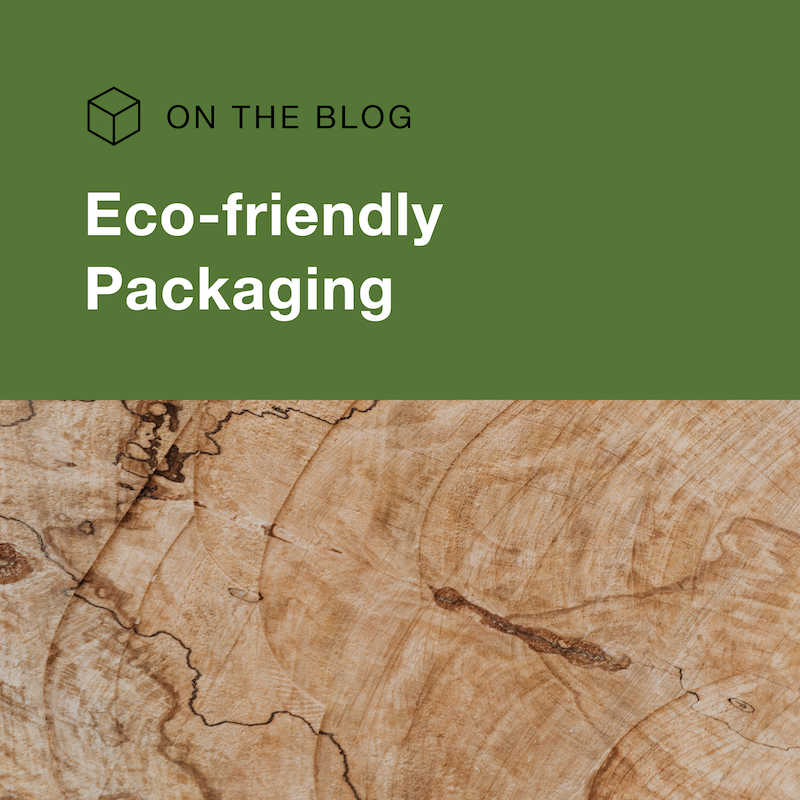Everyone Wins with Eco-Friendly Packaging
Packaging plays a significant role in our daily lives — from the products we consume to the businesses we support. Packaging secures our goods, conveys important information, and can impact buying decisions. However, if designed poorly or without careful consideration, it can affect the environment through wasted materials, damaged products, or poor material choices. Eco-friendly packaging allows us to enjoy the benefits of packaging while lessening the impact on the environment.
Eco-friendly Packaging By the Numbers
Eco-friendly packaging is becoming necessary for many product manufacturers as the retailers they work with and the consumers who buy their products demand an effort toward sustainability. Buying Green, a 2023 report of a 9,000-consumer survey, revealed that even in the current challenging economic environment, 70% are still focused on sustainable packaging despite inflation. And 82% would be willing to pay more for it. Another survey by DotCom in 2022 revealed that 69% of respondents reported eco-friendly packaging was the feature that prompted them to shop with a brand again, and 45% said it was the feature they found most appealing compared to other features, such as ethical sourcing and fuel-efficient transportation.
Types of Eco-Friendly Packaging
When it comes to choosing eco-friendly packaging materials, you have choices. The type of packaging you need depends on the product you are shipping. Below are some common packaging types and their benefits.
Paper-based packaging – An excellent alternative to plastic, paper-based packaging is renewable, biodegradable, and recyclable and is often made from recycled paper. Used to make corrugated cartons, packaging inserts, and protective fillers, paper is a solid choice when considering eco-friendly packaging.
Wood packaging – Used for shipping heavy items in the form of crates, pallets, and bases, sustainably sourced wood is not only sturdy but also eco-friendly. Wood packaging is reusable/repairable and compostable.
Reusable plastic – Molded cases and material handling totes and trays are examples where reusable packaging can make an impact not only on the environment but also by creating cost-savings by implementing closed-loop returnables programs and spreading the cost over multiple shipments.
Foam Packaging – Although many don’t know it, a lot of foam cushioning is recyclable, so you have options when a high level of performance is required to protect your product.
How Packaging Design Impacts Eco-Friendliness
Packaging manufacturers have the power to make a significant impact on the environment. One way we can do this is by choosing the best materials and optimizing packaging for the product. Optimizing the packaging eliminates unneeded packaging materials while providing superior product protection, improving truckload utilization.
Testing and validation can provide critical information about how your packaging will perform. This impacts sustainability because damaged and returned products take valuable resources and add to waste – the product, the packaging, and the fuel for shipping.
Eco-friendly packaging presents a win-win situation. It benefits businesses by aligning with consumer preferences, reducing warranty and return costs, and helping to fulfill corporate social responsibilities.
WIC Taking Sustainability Further
We take sustainability seriously, and it hasn’t gone without notice. In 2021, we were recognized with the Pregis Renew Award for our commitment to reducing carbon emissions. We were also recognized in 2022 by one of our HVAC customers as managing one of their largest waste diversion programs, with more than 2 million pounds diverted from the landfill that year. It should go without saying that we are big recyclers, but we also strive to have eco-friendly facilities and workspaces through composting, using efficiency control in our facilities, investing in energy-efficient vehicles and equipment, reducing unnecessary business travel, and eliminating unnecessary printing. By using renewable and recycled materials, eliminating excessive resources, and creating optimized packaging that prevents damage and returns, we are also dedicated to helping you meet your sustainability goals.
